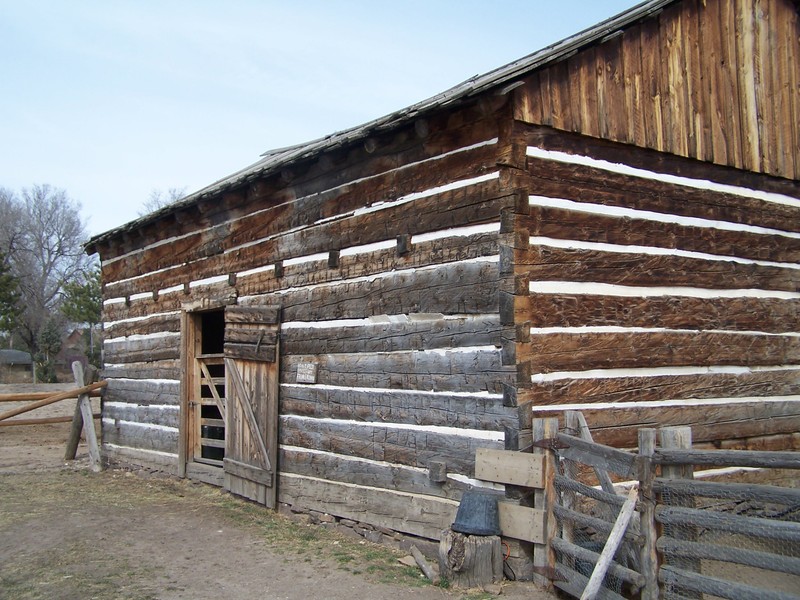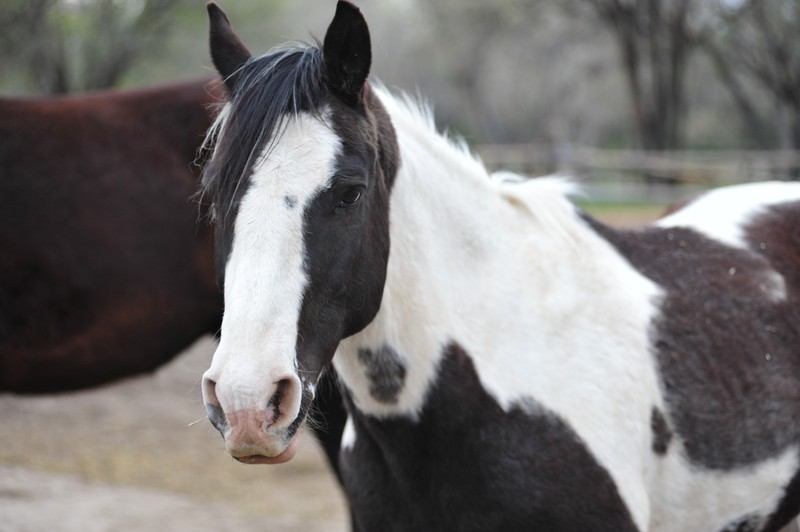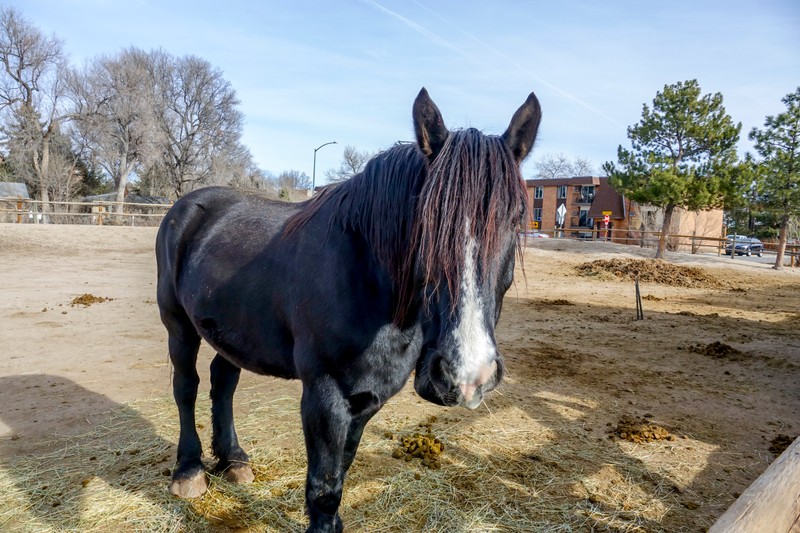The Log Barn
Introduction
Text-to-speech Audio
Images
Four Mile's Log Barn

Jake

Moose

Backstory and Context
Text-to-speech Audio
The log barn currently houses Four Mile’s two resident horses, Jake and Moose. They are on special diets, so visitors are discouraged from feeding them other foods. Jake is a Paint Quarter Horse, which was a common breed in the Old West. He weighs 1,000 pounds and measures 15.1 hands high. Horses are measured in hands, and one hand equals 4 inches. Paints descended from the horses that were brought over with the Spanish conquistadors in the 1500s. Paints were used by both cowboys and Native Americans alike. A sturdy, fast horse, Paints were used on ranches and farms.
Moose is a Percheron. He weighs 1,850 pounds and measures 18 hands high. Percherons came from France, and were used as draft horses. These sturdy horses would often pull smaller wagons and other gear, but not covered wagons. That job was done by oxen.
Sources
Four Mile Historic Park Collections
American Paint Horse
Home page - PHAOA
Four Mile Historic Park Collections
Four Mile Historic Park Collections
Four Mile Historic Park Collections
